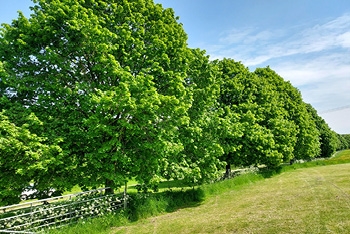Protecting Tilia trees: How members are helping to research tree diseases
Tilia trees are an important part of the UK's woodlands and urban forests. They provide a range of ecosystem services, such as improved air quality, stormwater runoff avoidance, and carbon storage. However, in recent years, there have been increasing reports of bleeding cankers in Tilia trees. The cause of this disease is unknown, but it is thought to be caused by a combination of factors, including climate change and pathogenic microorganisms.
Background on Tilia trees
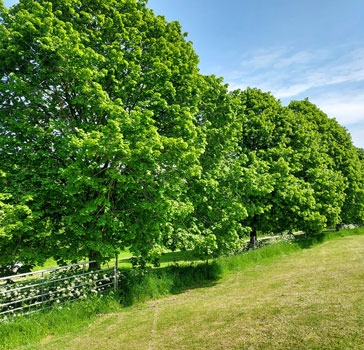
Importance of studying diseases that affect Tilia trees
There is currently no effective way to manage or control diseases affecting Tilia trees. In severe cases, the tree may be felled, especially if it poses a risk to health and safety. The lack of control measures for diseases affecting Tilia highlights the importance of continued research in the field.
Despite the resistant nature of Tilia trees towards pests and disease, climate change is predicted to have a negative impact and accelerate the spread and damage of pathogens. Periods of drought, high temperatures and excessive rainfall induced by the shifting climate are likely to weaken the trees leaving them vulnerable to pathogen attacks.
Introduction to Helene
My name is Helene Kile, and I am a first-year PhD student at the University of the West of England (UWE) under the supervision of Dr Carrie Brady.

I have always envisioned myself working in a plant-related field. This interest can be traced back to my early years, growing up in the Norwegian countryside surrounded by pine forests which lead to a deep-rooted interest and respect for nature. Aspiring for a more ambitious career, I left my job as a veterinary nurse and biological sciences became my natural choice of study. My area of interest has gradually become more focused through the years in academia, and by the end of the undergraduate degree, my interest in plant pathology had grown strong. I pursued this interest by undertaking an MRes degree to develop further knowledge and experience in the field. The MRes project (offered by Carrie at UWE) was based on the comparison of the bacterial microbiome of healthy and symptomatic Tilia trees to pinpoint potential bacterial pathogens involved in a disease of unknown cause. This was my first introduction to Tilia trees, and several interesting discoveries were made during this project, including the discovery of a novel and potentially pathogenic bacterial species (Brenneria tiliae). After completing the MRes we were eager to continue this research, and with funds generously awarded by FoWA and matched funding from UWE, we were able to create a PhD project that builds upon my previous discoveries.
Interest in studying Tilia tree diseases
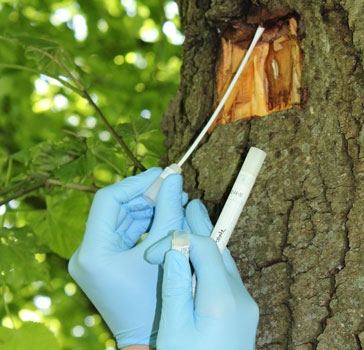
The research project
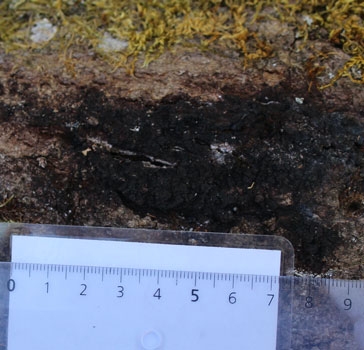
Importance of the project
My research aims are to determine the agent(s) responsible for the bleeding cankers, the occurrence and the potential threat posed to Tilia trees in the UK.
The large-leaved lime (Tilia platyphyllos), the small-leaved lime (Tilia cordata) and their hybrid the common lime (Tilia x europaea) occur naturally across the UK, but due to their poor ability to colonise, they are often rare or absent in new forests and are more frequently found in old woodlands. Therefore, they are considered ancient woodland indicators, and their presence can be used to recognise these biologically important woodlands. The value of these species is further highlighted by the range of ecosystem services they provide to the UK woodlands and urban forests. Tilia trees have been reported to contain high concentrations of nutrients in their leaves, decompose rapidly and positively influence the soil base saturation, leading to enhanced soil nutrient status and nutrient cycling. In urban areas such as parks and avenues Tilia species are among the most frequently planted tree species where they provide improved air quality, avoid stormwater runoff and store large amounts of carbon. They also support the pollinating community by providing valuable floral resources. Old, hollow Tilia trees in parks provide valuable habitats for a range of saproxylic beetles including red-listed species.
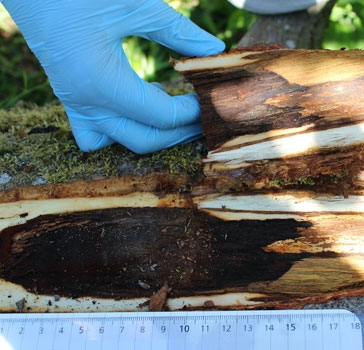
Current progress and findings
The research is still in its infancy as I only started my PhD in January, however, from the samples I have analysed so far, several potentially pathogenic bacteria including B. tiliae have been isolated from new sites in Gloucestershire, Wiltshire, and Shropshire. Going forward we will continue to sample Tilia trees with bleeding cankers present across the UK to aid the data collection. Based on what we find, pathogenicity trials will be set up to determine whether these bacteria can cause disease in Tilia trees. This will help us elucidate the causal agent(s) responsible for the bleeding cankers observed.
The research project described in this blog is investigating the cause of bleeding cankers in Tilia trees. The results of this research will help us to understand the cause of bleeding cankers in Tilia trees and to develop strategies for managing the disease. This is important because Tilia trees are an important part of the UK's ecosystems. By protecting these trees, we can help to maintain the health of our woodlands and urban forests.
Our charity supports the arboretum in a number of ways, including funding research projects. This research project into the cause of bleeding cankers in Tilia trees is being part-funded by the University of West England and the Friends of Westonbirt Arboretum, thanks to the generous donations of our members through membership.
The Friends are committed to supporting the research and conservation of trees, and we believe that this project is essential to understanding the threat posed by the cause of bleeding cankers to Tilia trees in the UK. The project is still in its early stages, but The Friends are confident that it will make a significant contribution to our understanding of this disease.
If you would like to support us and help to fund important research projects like this one, you can become a member or make a donation today. Your membership will help to ensure that the arboretum can continue to be a centre for tree research and conservation.
